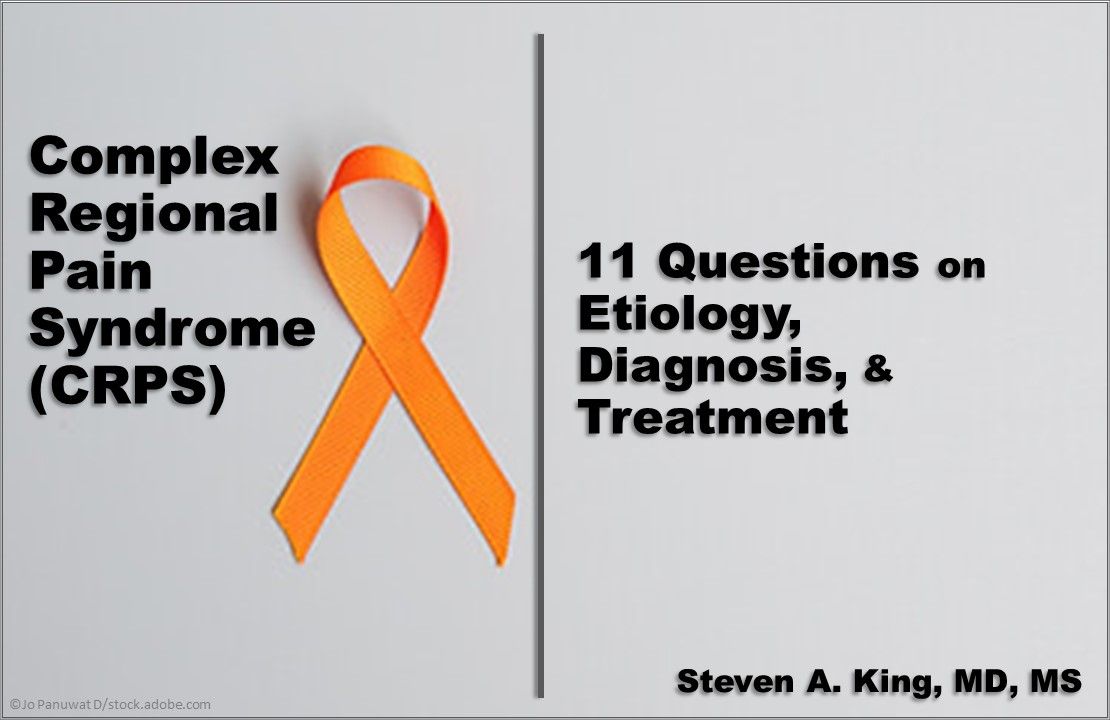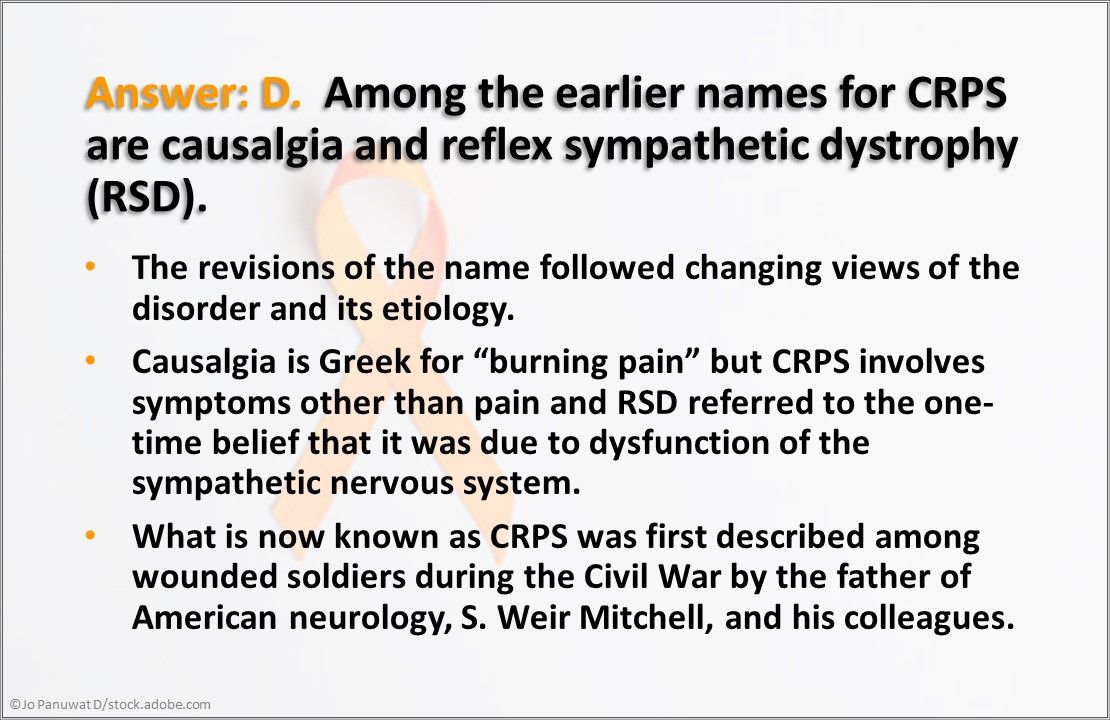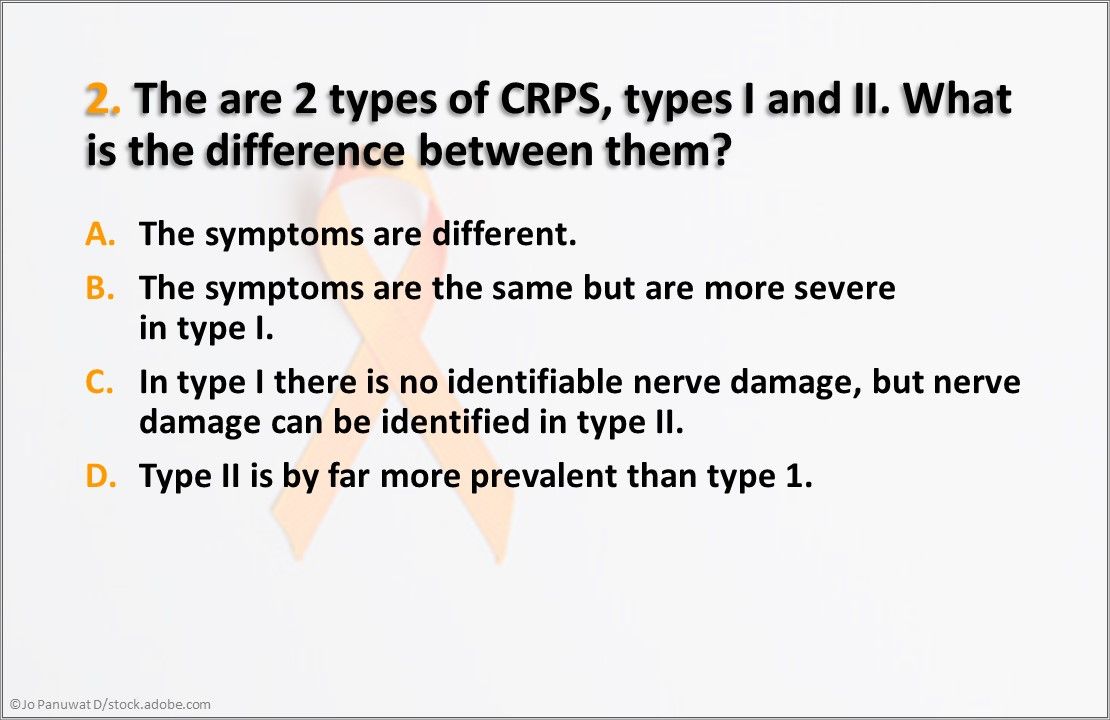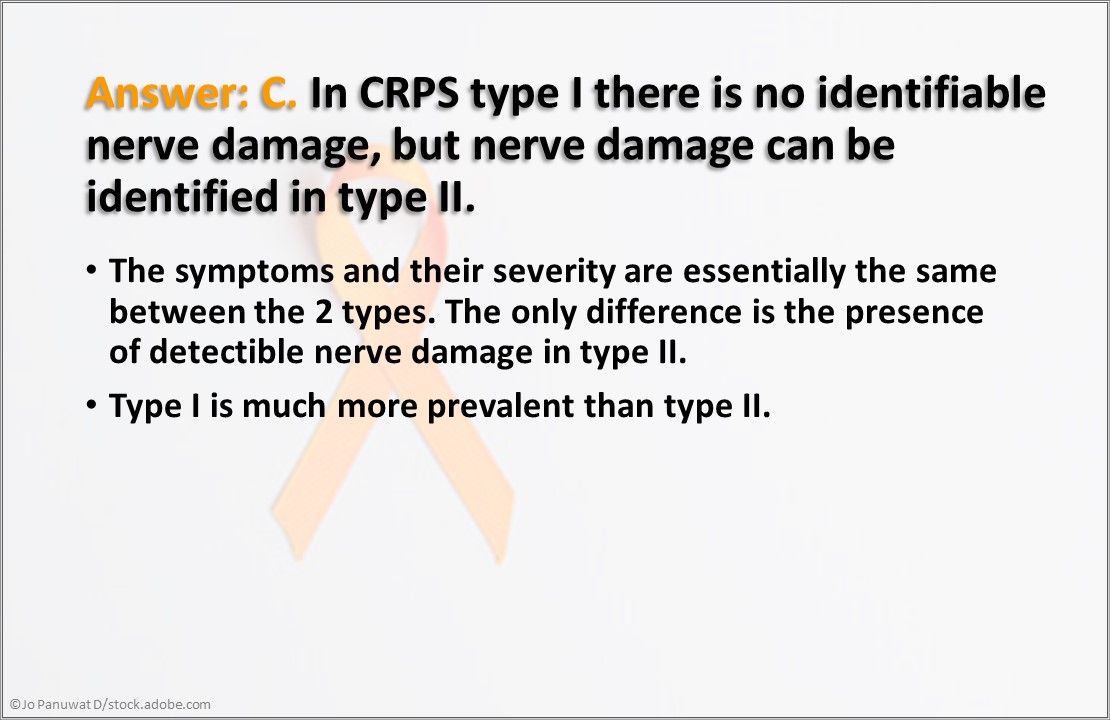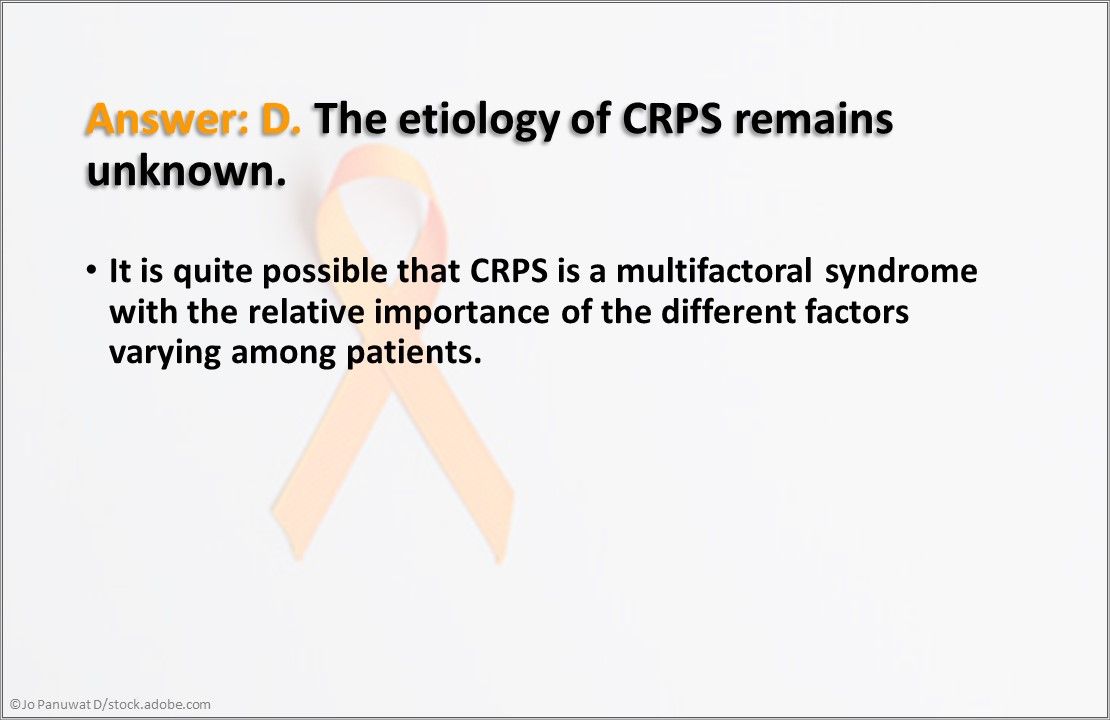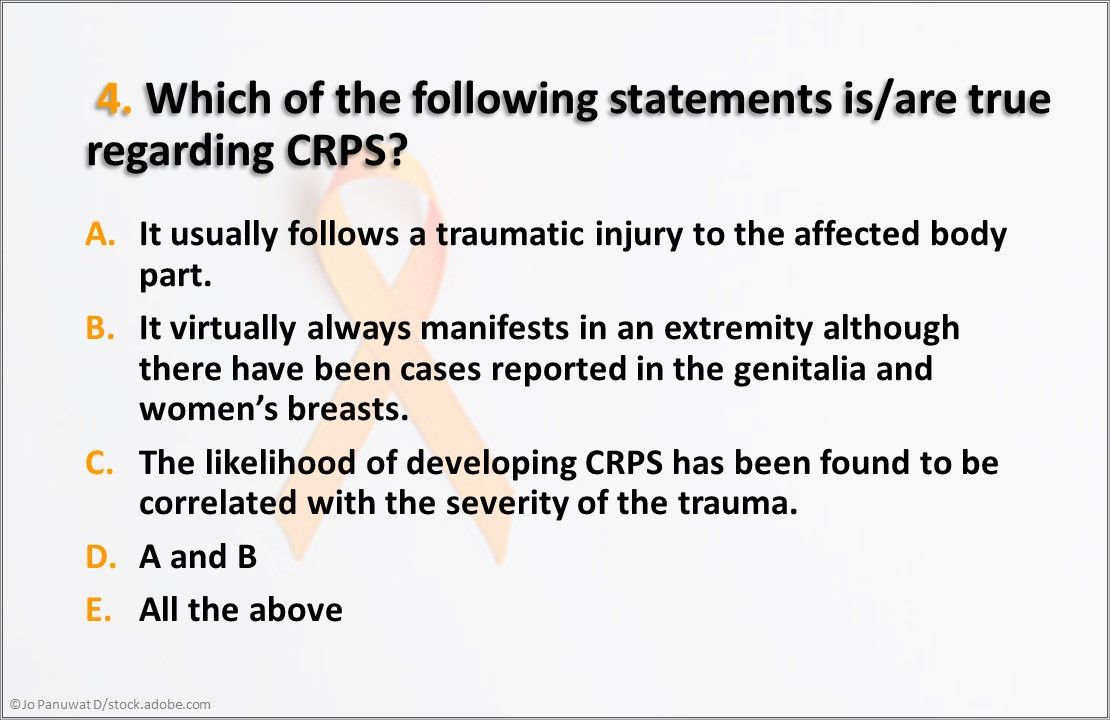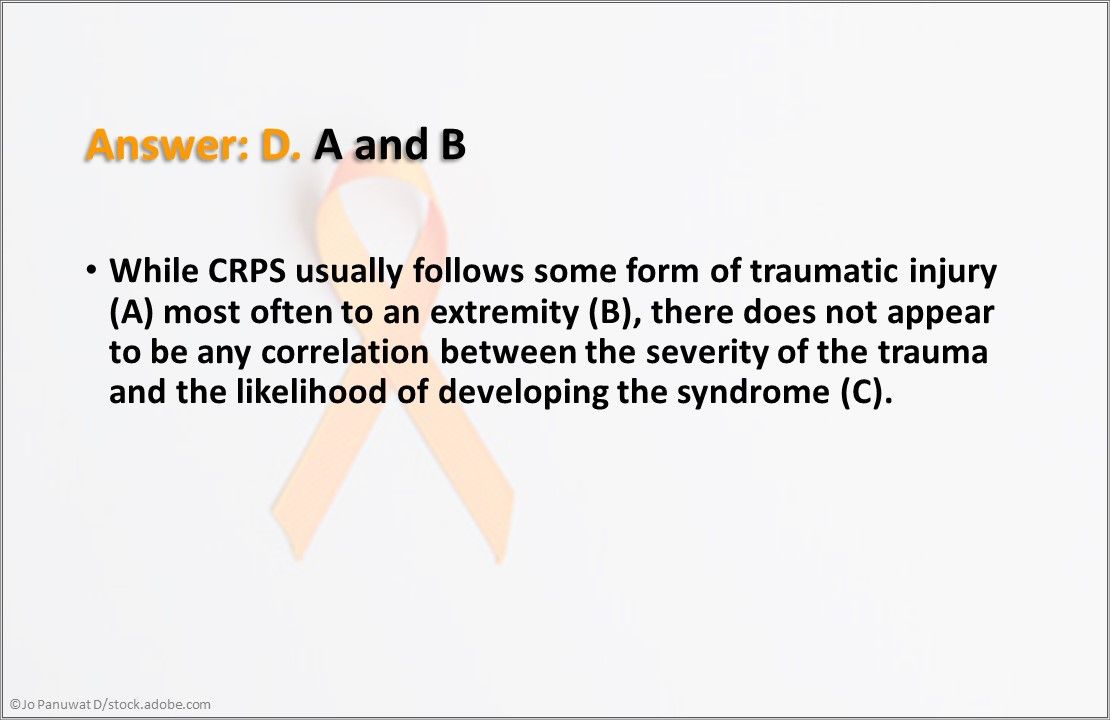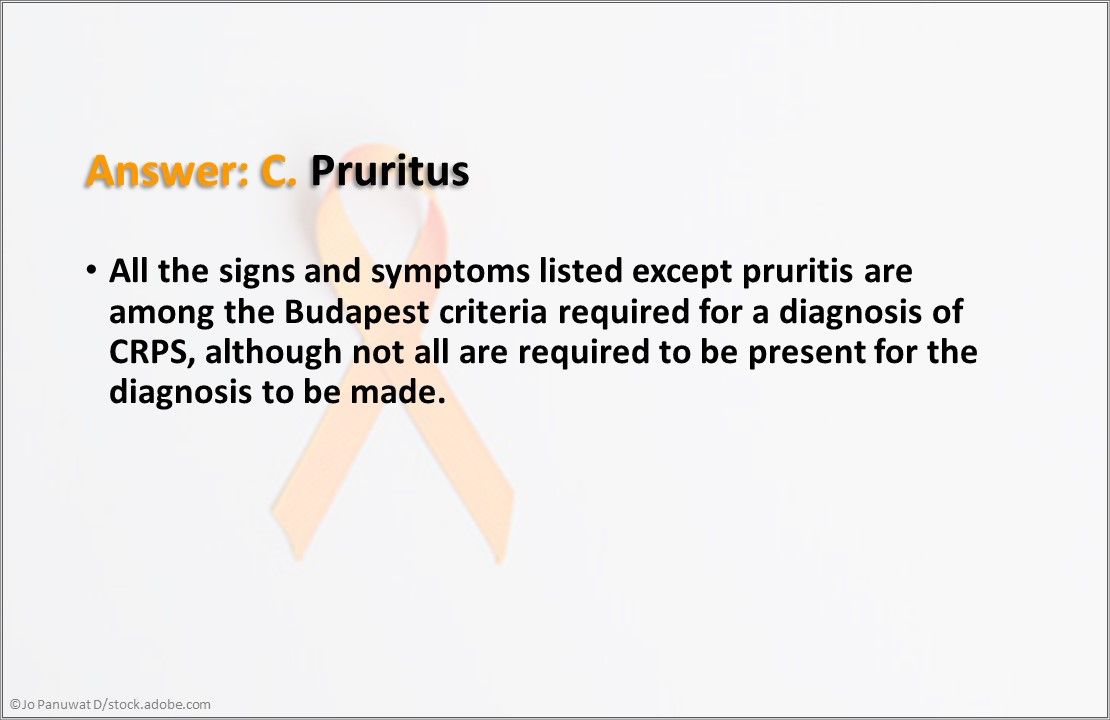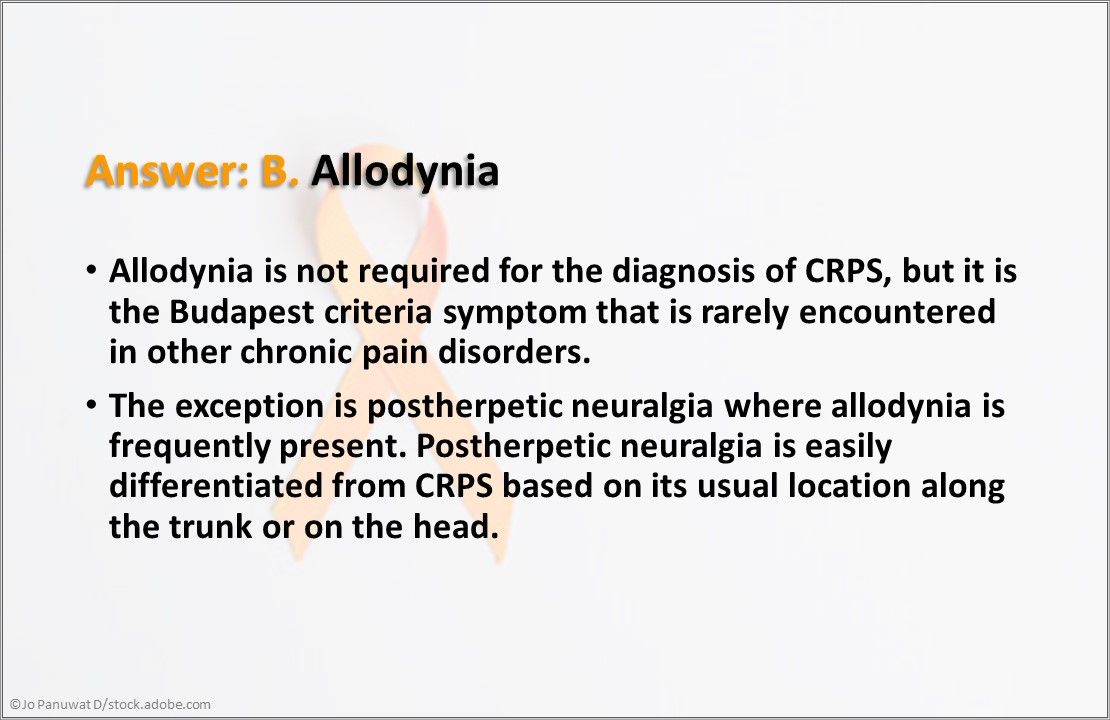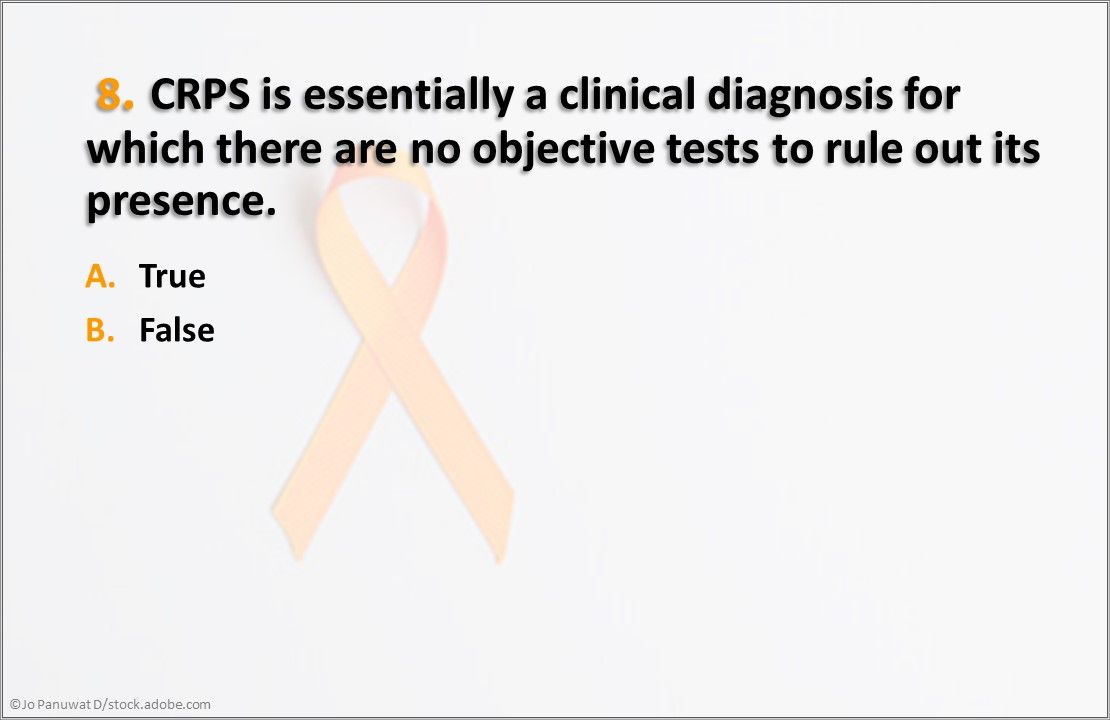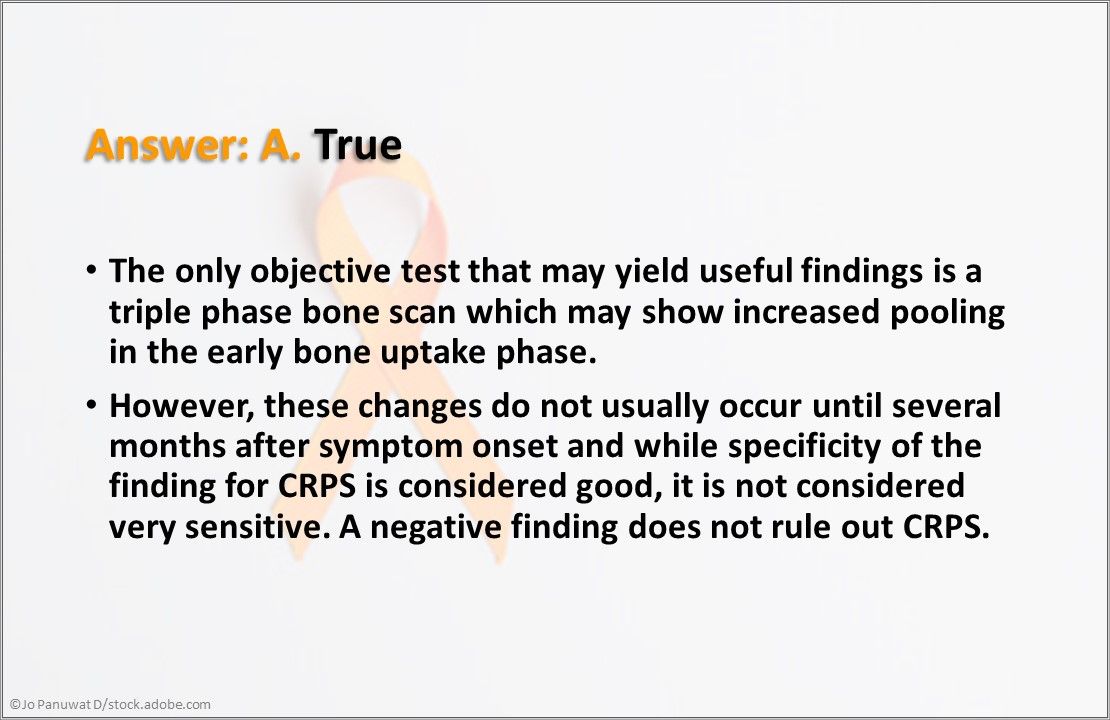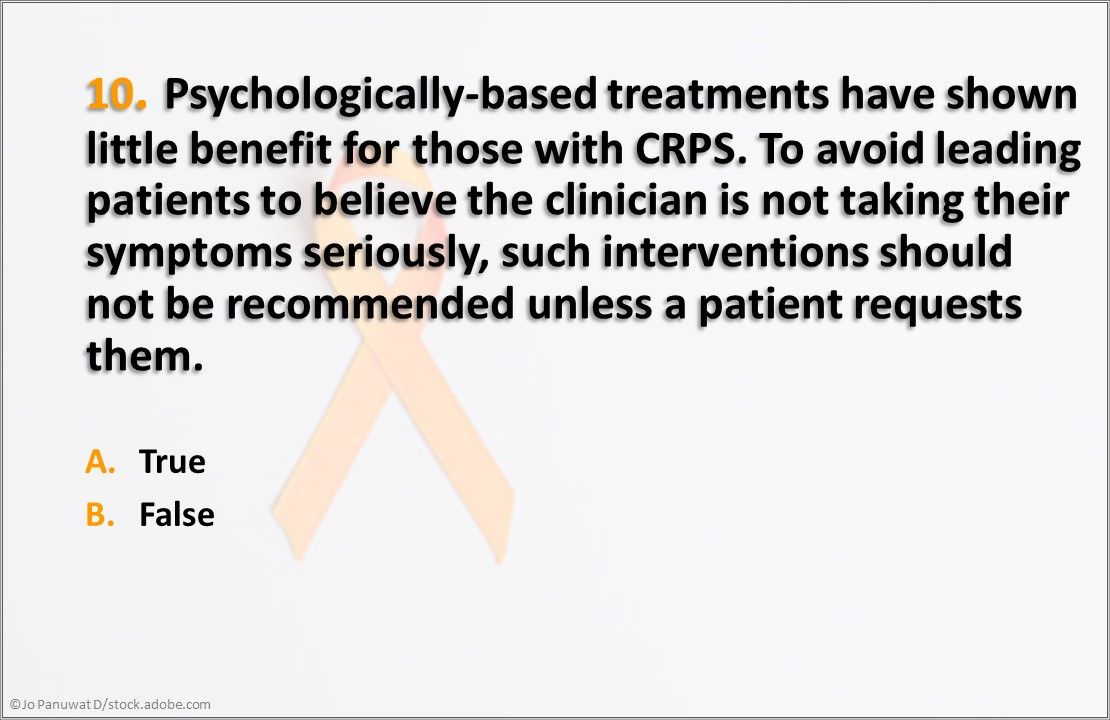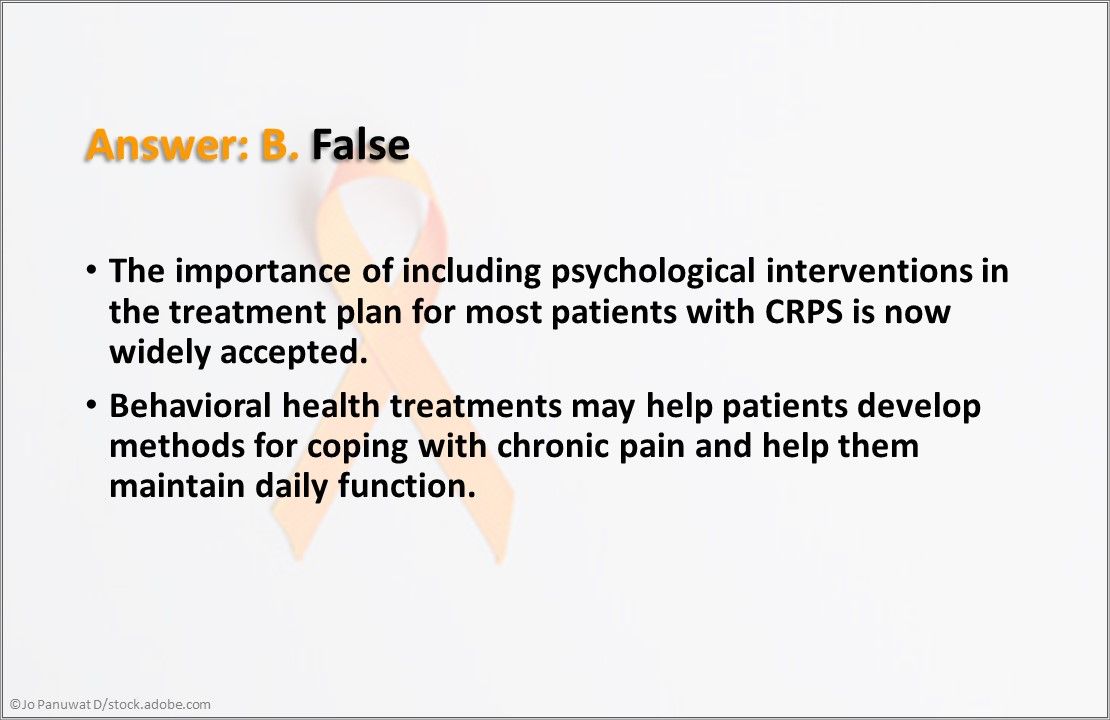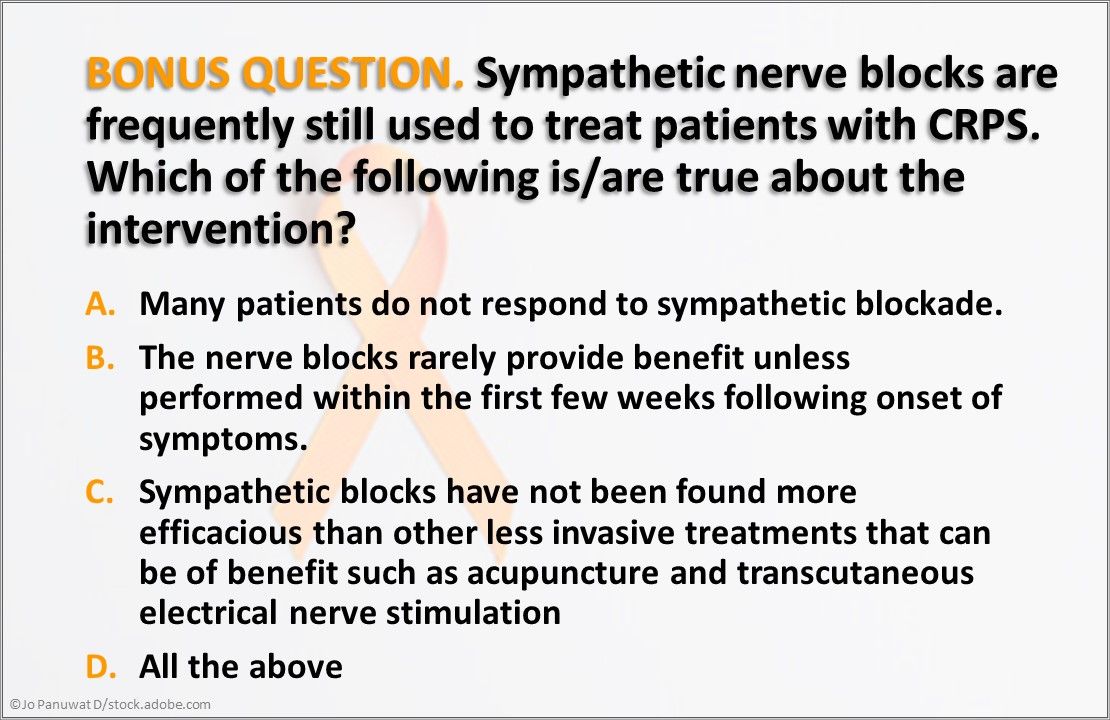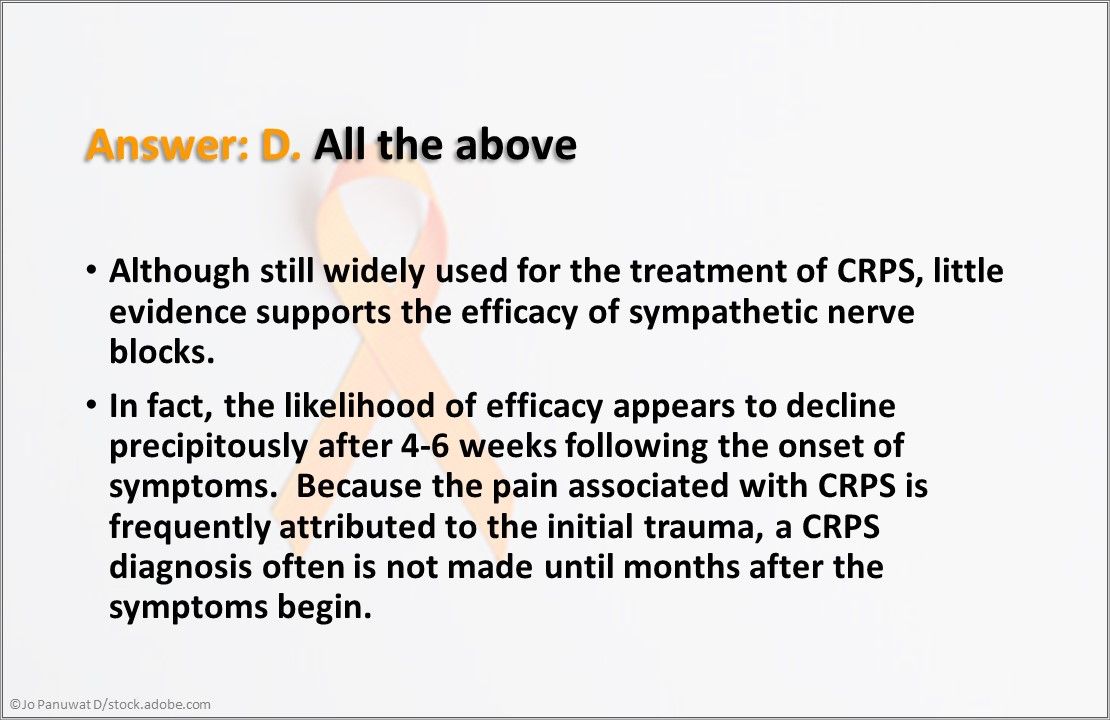Pain associated with complex regional pain syndrome, or CRPS, can range from moderate to disabling and clinical outcomes are highly variable. The diagnosis remains a clinical one and is based on a detailed examination and patient history conducted by a physician such as a physiatrist or neurologist. There is no specific test used to confirm CRPS.
The original injury preceding the pain and some signs and symptoms seen more often in patients with CRPS than in other pain syndromes may should raise suspicion for the disorder; once diagnosed, however, the treatment course will be highly individual.
The quiz questions that follow are based on the most current research on diagnosis and treatment. Find out what you know, and what you may want to know more about.
1. Which of the above statements are true regarding CRPS?
Answer: D. Among the earlier names for CRPS are causalgia and reflex sympathetic dystrophy (RSD).
2. The are 2 types of CRPS, types I and II. What is the difference between them?
Answer: C. In CRPS type I there is no identifiable nerve damage, but nerve damage can be identified in type II.
3. Which of the above is true regarding the etiology of CRPS?
Answer: D. The precise etiology of CRPS remains unknown.
4. Which of the above statements is/are true regarding CRPS?
Answer: D. A and B. While CRPS usually follows some form of traumatic injury (A) most often to an extremity (B), there does not appear to be any correlation between the severity of the trauma and the likelihood of developing the syndrome (C).
5. All but which one of the above are included in the Budapest criteria for CRPS created by the IASP—considered to be the best currently available for their sensitivity and specificity?
Answer: C. Pruritis is not included in the Budapest criteria for a diagnosis of CRPS.
6. The Budapest criteria allow for CRPS to be diagnosed along with another syndrome that may result in similar symptoms. True or False?
Answer: B. False. The Budapest criteria require that “there is no other diagnosis that better explains the signs and symptoms.”
7. Which of the above symptoms and signs included in the Budapest criteria is considered the most idiomatic for CRPS?
Answer: B. Allodynia. Allodynia is not required for the diagnosis of CRPS, but it is the Budapest criteria symptom that is rarely encountered in other chronic pain disorders.
8. CRPS is essentially a clinical diagnosis for which there are no objective tests to rule out its presence.
Answer: A. True. The diagnosis of CRPS is a clinical one. The only objective test that may yield useful findings is a triple phase bone scan which may show increased pooling in the early bone uptake phase.
9. Which of the following classes of medications that have been studied for management of CRPS is considered least likely to be effective?
Answer: C. Opioids. No single class of medications is considered especially efficacious for CRPS; however, opioids appear to be the least likely of the options listed to provide benefit.
10. Psychologically-based treatments have shown little benefit for those with CRPS. To avoid leading patients to believe the clinician is not taking their symptoms seriously, such interventions should not be recommended unless a patient requests them.
Answer: B. False. The importance of including psychological interventions in the treatment plan for most patients with CRPS is now widely accepted. Behavioral health treatments may help patients develop methods for coping with chronic pain and help them maintain daily function.
BONUS QUESTION. Sympathetic nerve blocks are frequently still used to treat patients with CRPS. Which of the following is/are true about the intervention?
Answer: D. All the above. Although still widely used for the treatment of CRPS, little evidence supports the efficacy of sympathetic nerve blocks. •In fact, the likelihood of efficacy appears to decline precipitously after 4-6 weeks following the onset of symptoms. Because the pain associated with CRPS is frequently attributed to the initial trauma, a CRPS diagnosis often is not made until months after the symptoms begin.
Sources/Resources
Atkinson A. Unraveling the complex regional pain syndrome enigma. Pain Med. 2020;21:225-229.
Bharwani KD, Dirckx M, Huygen FJM. Complex regional pain syndrome: diagnosis and treatment. BJA Education. 2017;17:262-268.
Harden RN, Oaklander AL, Burton AW, et al. Complex regional pain syndrome: practical diagnostic and treatment guidelines, 4th edition. Pain Med. 2013;14:180-229.
Mesaroli G, Hundert A, Birnie, et al. Screening and diagnostic tools for complex regional pain syndrome. Pain. 2021; 162:1295-1304

